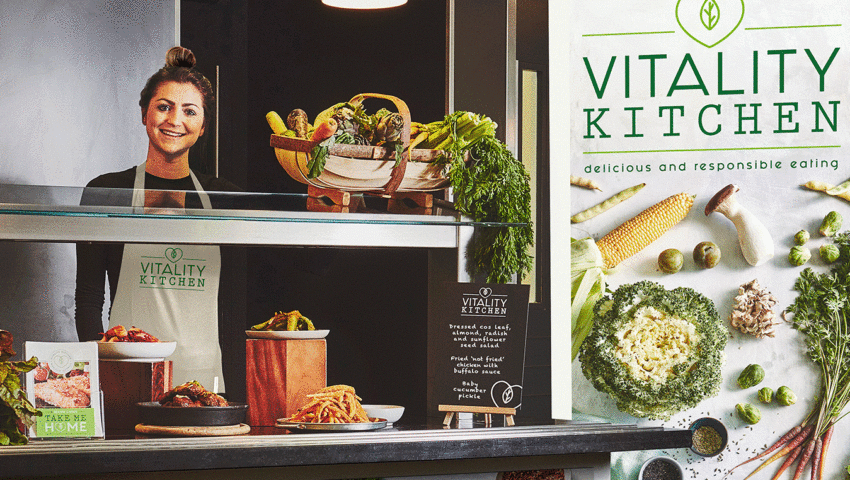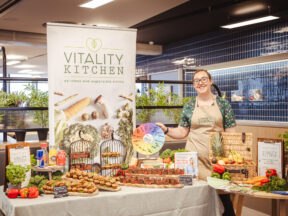Blogs
Summer Vitality

A quick scan of the internet at this time of year will probably lead you to land upon dozens of articles entitled ‘healthy eating in summer’. It’s true that when the clocks go back and the sun shines brighter our diets also change to reflect the new season. Often leading us to crave lighter meals, more colours and variety.
SUMMER VITALITY
At this time of year, we also see the launch of spring menus based on the new season. Summer Vitality focuses on a balanced range of foods of which seasonal, veg-centric recipes are at the forefront. Our Vitality Manifesto highlights the key aspects of a healthy diet. One that’s rich in fruit, vegetables, fibre-rich whole grains, dairy, a variety of protein-rich foods and healthy fats (1). But often it’s challenging to put this into practice. To aid this, we’ve developed vitality recipe cards, available to take home. Our goal is to provide inspiration for healthy options to cook at home.
SEASONALITY
We actively encourage chefs to plan menus around what’s in season. At the time of writing, we’ve had an influx of foods coming into season including asparagus, broccoli, jersey royal new potatoes, lettuce and salad leaves. It can often feel that we spend the winter months munching on potatoes, huddled up, sipping on broths and stews. So, by the time spring comes round I welcome it with open arms with the influx of colours, textures and variety. This can be really helpful towards meeting the 5-a-day target. One portion of fruit and veg is equal to 80g of fresh, frozen or canned fruit and vegetables, 30g of dried fruit, 150ml of 100% fruit/vegetable juice or smoothie or 80g of beans or pulses (2). It’s tempting to boost up on our juice and smoothies over the summer period due to the increased availability of fruits such as berries. However, regardless of how much you drink 150ml will only ever provide one portion. So even if you drink 5 smoothies a day you’ll have only had 1 of your 5-a-day! Equally, I’ve been asked many times whether eating five portions of the same fruit or vegetable counts but this misses out on one of the best parts of this season – variety!
Four great reasons to eat your fruit and veg;
- Fibre
Dietary fibre refers to the plant-derived carbohydrates that evade human digestion. Fruit and veg is a great place to get dietary fibre from. Evidence suggests that fibre is related to good health outcomes (3). It’s recommended that adults aim for 30g of fibre a day – to make the most of the new season and boost your fibre intake snack on whole fruit and veg.
- Vitamins and minerals
Fruit and veg contribute to vitamin and mineral intake. They contain a variety of vitamins and minerals essential to our health e.g Vitamin C, A, Folate and Potassium. A good indicator is to try and include a diverse range of colours on your plate.
- Phytochemicals
Fruit and veg also contain phytochemicals including plant sterols, flavonoids and other antioxidants, which are produced naturally by the plant as a defence and have links to positive health outcomes.
- Water
Hydration is particularly important as the weather warms up. Fruit and veg are high in water content so a useful way to get in that extra water.
References:
- Public Health England. The Eatwell Guide. London: Public Health England; 2018. Available from: https://www.gov.uk/government/publications/the-eatwell-guide
- 5 A Day: what counts? nhs.uk. 2018. Available from: https://www.nhs.uk/live-well/eat-well/5-a-day-what-counts
- Scientific Advisory Committee on Nutrition. Carbohydrates and Health. London: The Stationary Office; 2015. Available from: https://assets.publishing.service.gov.uk/government/uploads/system/uploads/attachment_data/file/445503/SACN_Carbohydrates_and_Health.pdf





